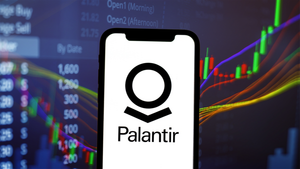
Most retail traders and investors, that is, those who trade with their own money, often wonder how the professionals come to pick the stocks and industries they come to pick amongst the thousands of names available for trading daily.
The first thing that these professionals, those who trade other people's money (whether at a fund or an investment bank), look for to develop their portfolio ideas starts with a process called "top-down" research. This is a fancy way of saying that they begin with a zoomed-out view of what is happening in an economy and drill their way through it to end up with specific stocks to buy or sell potentially.
To save you the endless hours and rabbit holes that this process can carry with it, MarketBeat has done the homework to bring you the specific highlights happening in the education sector and why unexpected names like Alphabet (NASDAQ: GOOGL), Coursera (NYSE: COUR), and even Duolingo (NYSE: DUOL) could be the place to start looking into for squeezing a decent profit out of the market.
Mechanics at work
One of the things that these traders look for is economic activity within a given space, such as rising employment or overall business activity. When it comes to the educational services space, these professionals were able to spot these and other trends that call for a closer look inside it.
A widely followed indicator that can point you in this direction is the ISM services PMI report, which comes out every month to provide a pulse on the business services sector of the U.S. economy. The past quarter of reports will show that educational services experienced their first breakout in January, sparking researcher curiosity.
Growth is one of the factors that any investor is looking for today, especially with the uncertainty surrounding the timing of FED interest rate cuts. This can drive most market participants to seek businesses that are relatively immune to the business cycle but still offer justifiable reasons to deliver above-average growth.
If you were – maybe you are – a manager or a business owner, are there many other reasons to go on a hiring spree other than the expectation of increased business shortly? That is probably what is going through the heads of the hiring managers in the industry, which added a significant chunk of jobs in the past month.
The employment situation report (better known as the NFP) reported that 353 thousand jobs were added to the U.S. economy in January. Educational services and businesses represented 112 thousand jobs, which is 31.7% of the whole! Taking nearly a third of all jobs is nothing to move past without taking another look.
Remember that these are not government-related educational services but rather private education. Knowing what you know now, wouldn't it make sense that these traders will start looking for the best of the best stocks within that space?
The best only
Suppose your portfolio needs the stability of an extensive and diversified business to get you the exposure you probably now want to bring in this space. In that case, you may consider Alphabet to this list.
Better known as Google, this business hosts a comprehensive list of online educational courses for just about anyone to undertake; Google certificates are now being recognized as sufficient preparation to get you past job interviews. What a time to be alive!
More than that, this is considered a blue chip stock in the outperforming technology stocks sector, so you get the best of all worlds in this one. Suppose your portfolio can afford a bit more volatility (and upside potential by the same token). A more direct play into bespoke education platforms may be your cup of tea today.
Taking the technology services sector as a whole, two things will become most important for you to spot the positive outliers likely to call for investment dollars their way. First, earnings per share growth is set by analysts, and the forward price-to-earnings ratio is the market's way of placing a value today on those projected earnings of tomorrow.
On average, the space is expected to grow its EPS by 32.9%. In contrast, Duolingo analysts comfortably project 211.5% growth for the next twelve months. This could be why markets are willing to pay a forward P/E of 120.1x, a premium of 426.0% over the industry's 22.9x average.
"It must be expensive for a reason" applies here, and now you know why. The story rhymes with Coursera stock, as analysts see a 300.0% jump in EPS for this year. This is also why markets reward this stock with its 111.1x forward P/E valuation, a premium of 386.0% over the industry.
Considering that these stocks are a long way from their 52-week high prices today, while the rest of the tech sector (the NASDAQ) keeps flirting with breaking past all-time highs, it could be a matter of time before this performance gap is closed by an inflow of professional investors.




